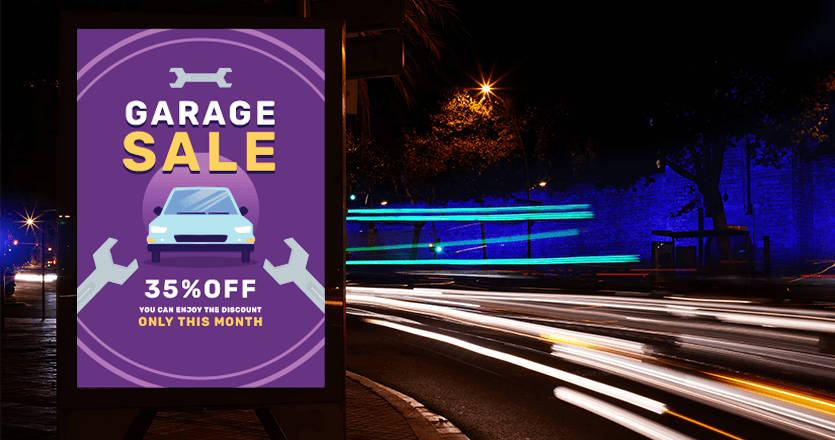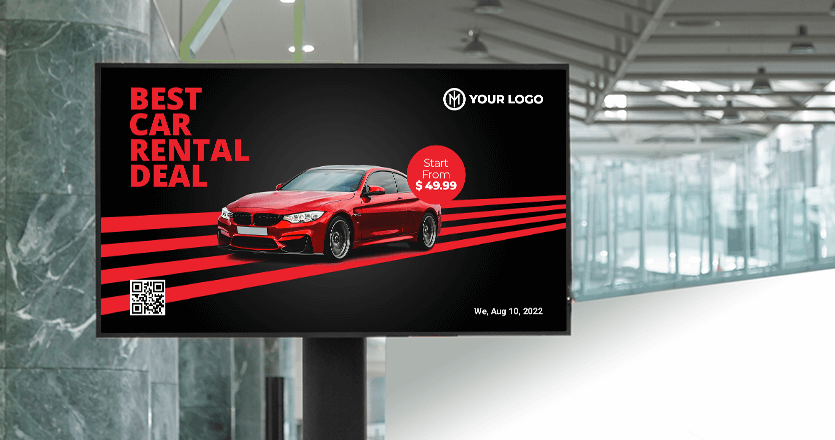What is automotive signage? And most importantly, how can you upgrade it today?
Introduction to Automotive Signage
Automotive signage encompasses a wide range of signs and graphics used within the automotive industry for various purposes, such as advertising, branding, and conveying information. This type of signage is crucial for automotive businesses, including car dealerships, repair shops, and car wash services, as it enhances visibility, engages customers, and promotes a professional image.
Importance of Automotive Signage:
- Visibility: Effective signage captures attention and makes it easy for customers to locate and identify businesses.
- Branding: Consistent and professional signage helps reinforce brand identity and trust.
- Informational: Provides essential information, such as services offered, operating hours, and directions.
- Promotional: Signage can highlight special offers, promotions, and events, driving customer engagement and sales
Applications of Automotive Signage
Dealerships
Dealerships leverage a variety of signage to enhance their branding, guide customers, and promote their inventory and services.
- Exterior Signage: This includes large building signs that display the dealership’s name and logo prominently, often illuminated for visibility at night. These signs help attract potential customers driving by and establish a strong brand presence.
- Banners: These are used for promotional events such as sales, new arrivals, or special financing offers. They are versatile and can be placed outside the dealership or within the showroom to catch customer attention.
- Interior Signage: Inside the dealership, signs serve multiple purposes such as guiding customers to different sections like new cars, used cars, service areas, and financing offices. Additionally, promotional displays highlight special offers or new vehicle features.
Repair shops and service centers
Automotive repair shops and service centers use signage to provide clear directions, ensure safety, and promote their services.
- Directional signs: These include parking signs, entrance and exit signs, and directional arrows to guide customers and ensure smooth traffic flow within the service area.
- Safety signs: Essential for compliance with safety regulations, these signs alert customers and employees to potential hazards, such as wet floors, restricted areas, and the need for protective gear.
- Promotional signs: These highlight special offers on services like oil changes, tire rotations, or seasonal maintenance checks. They can be placed in waiting areas or outside the service center to attract passing motorists.
Car wash and detailing services
Car wash and detailing businesses utilize signage to inform customers, promote services, and enhance the overall customer experience.
- Promotional Banners: Displaying special deals, membership offers, and seasonal promotions, these banners attract new customers and encourage repeat business.
- Instructional Signs: These provide step-by-step instructions for different wash packages, guiding customers through self-service options or automated car wash processes. Clear, easy-to-understand signage ensures a smooth and efficient experience for customers.
Fleet Vehicles
For businesses with a fleet of vehicles, signage plays a critical role in branding, compliance, and communication.
- Branding: Company logos, contact information, and slogans are prominently displayed on fleet vehicles, turning them into mobile advertisements. This consistent branding across all vehicles helps increase brand recognition and trust.
- Regulatory compliance: Fleet vehicles often need to display specific information such as US DOT numbers, vehicle identification numbers, and other regulatory details. Proper signage ensures compliance with federal and state regulations and avoids potential fines.
By effectively utilizing various types of automotive signage, businesses can significantly enhance their visibility, provide valuable information to customers, and create a professional and cohesive brand image across all touchpoints.

Benefits of automotive signage
Automotive signage provides numerous advantages for businesses in the automotive industry, enhancing visibility, branding, and customer engagement. Here are some key benefits:
Cost-effective advertising
- High Impressions: Automotive signage, particularly vehicle wraps and decals, can generate thousands of impressions daily. A single wrapped vehicle can produce between 30,000 to 70,000 impressions per day, depending on location and driving habits.
- Low Cost per Impression: Compared to traditional advertising methods like billboards or print media, automotive signage offers a significantly lower cost per impression, making it a cost-effective marketing strategy.
Professional appearance
- Brand Consistency: Utilizing consistent signage across all company vehicles helps in maintaining a uniform brand image. This consistency extends to all touchpoints with potential customers, reinforcing brand recognition and loyalty.
- Customer Trust: Professionally designed and installed signage conveys a sense of reliability and professionalism, which can enhance customer trust and confidence in the business.
Upgrading to digital signage
Digital signage is an advanced solution that offers dynamic and interactive options for automotive businesses, significantly enhancing their advertising and informational capabilities.
Introduction to Digital Signage Software
A quick definition
Digital signage software refers to platforms used to manage large numbers of digital displays, allowing businesses to control content remotely and update it dynamically. This type of software also allows for advanced content creation and management capabilities, often offering interactive elements as well.

Benefits of Digital Signage
Dynamic content
Digital signage enables businesses to update promotions, advertisements, and information quickly and efficiently. This flexibility allows for timely and relevant content that can adapt to market changes and customer preferences.
Increased engagement
Interactive displays attract more attention compared to static signs. Features like touch screens and motion graphics can engage customers more deeply, leading to higher retention rates and improved customer experiences.
Remote management
Digital signage systems often come with cloud-based management tools that allow for remote content updates. This feature is particularly beneficial for businesses with multiple locations, ensuring consistent messaging across all sites.
Creating digital signs step-by-step
- Choose these software: Select a digital signage software that fits your business needs, considering factors such as ease of use, features, and pricing.
- Design the content:
- Templates: Utilize pre-designed templates provided by the software or create custom designs tailored to your brand.
- Media: Incorporate a variety of media types, including images, videos, and animations, to create engaging content.
- Setup hardware:
- Displays: Install digital screens in strategic locations, such as showrooms, waiting areas, or outdoor advertising spots.
- Players: Connect media players to the screens to deliver content seamlessly. These players can be managed remotely to update content as needed.
- Deploy content:
- Upload: Use the digital signage software to upload and schedule your content. This step ensures that the right messages are displayed at the right times.
- Monitor: Regularly monitor the displays to ensure content is showing correctly and make necessary adjustments. Most digital signage systems provide analytics to track performance and engagement.
By integrating both physical and digital signage elements, automotive businesses can enhance their visibility, customer engagement, and overall professionalism, driving growth and brand recognition.
Future trends in automotive signage
Some of the future trends that we have mapped are presented below to showcase the shifting nature of communication installations in the automotive sector.
Eco-friendly materials
There is a rising trend towards using sustainable and recyclable materials in signage. This includes the use of biodegradable vinyl, recycled plastics, and other environmentally friendly options. These materials not only reduce the environmental impact but also appeal to increasingly eco-conscious consumers.
Augmented reality (AR)
AR technology is starting to be used in automotive signage to create immersive customer experiences. For example, potential car buyers can use AR to see a 3D model of a vehicle and explore its features in a virtual environment. This can be particularly effective in showrooms or at trade shows, where space is limited.
Personalization
There is an increasing demand for custom, unique designs that reflect a business’s brand and personality. Personalized signage can include custom graphics, tailored messages, and even interactive elements that allow customers to engage directly with the brand. This trend is driven by the need to stand out in a crowded market and to create memorable customer experiences.
Conclusion
Automotive signage, both physical and digital, plays a crucial role in enhancing the visibility and professionalism of automotive businesses. From vehicle decals and wraps to cutting-edge digital displays, effective signage solutions can drive customer engagement, reinforce brand identity, and ensure compliance with regulatory requirements. As technology advances and customer preferences evolve, businesses that embrace new trends such as digital signage, eco-friendly materials, and innovative design techniques will be better positioned to attract and retain customers. By integrating these elements into their signage strategies, automotive companies can achieve greater visibility, stronger customer connections, and ultimately, sustained business growth.
